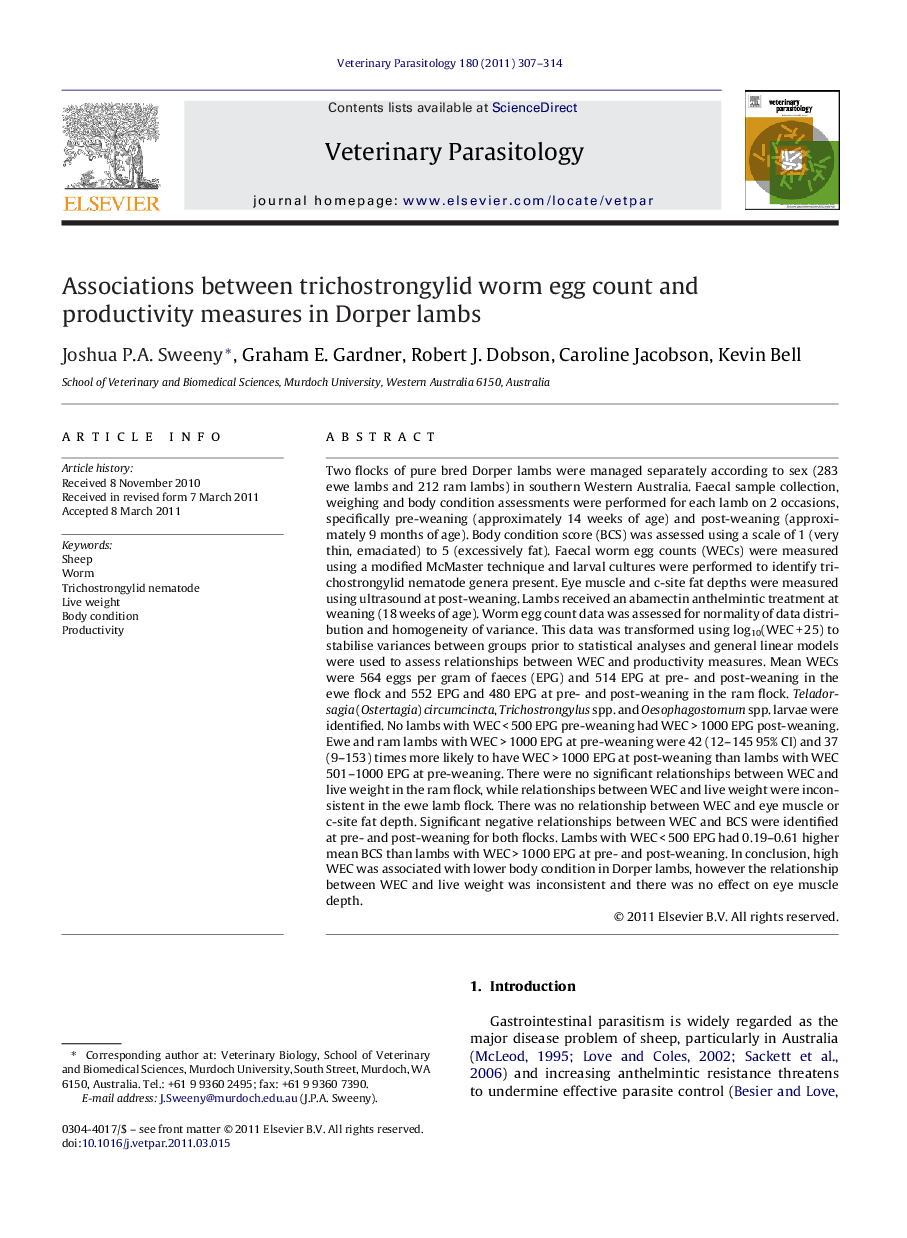| کد مقاله | کد نشریه | سال انتشار | مقاله انگلیسی | نسخه تمام متن |
|---|---|---|---|---|
| 5805721 | 1555722 | 2011 | 8 صفحه PDF | دانلود رایگان |

Two flocks of pure bred Dorper lambs were managed separately according to sex (283 ewe lambs and 212 ram lambs) in southern Western Australia. Faecal sample collection, weighing and body condition assessments were performed for each lamb on 2 occasions, specifically pre-weaning (approximately 14 weeks of age) and post-weaning (approximately 9 months of age). Body condition score (BCS) was assessed using a scale of 1 (very thin, emaciated) to 5 (excessively fat). Faecal worm egg counts (WECs) were measured using a modified McMaster technique and larval cultures were performed to identify trichostrongylid nematode genera present. Eye muscle and c-site fat depths were measured using ultrasound at post-weaning. Lambs received an abamectin anthelmintic treatment at weaning (18 weeks of age). Worm egg count data was assessed for normality of data distribution and homogeneity of variance. This data was transformed using log10(WECÂ +Â 25) to stabilise variances between groups prior to statistical analyses and general linear models were used to assess relationships between WEC and productivity measures. Mean WECs were 564 eggs per gram of faeces (EPG) and 514 EPG at pre- and post-weaning in the ewe flock and 552 EPG and 480 EPG at pre- and post-weaning in the ram flock. Teladorsagia (Ostertagia) circumcincta, Trichostrongylus spp. and Oesophagostomum spp. larvae were identified. No lambs with WECÂ <Â 500 EPG pre-weaning had WECÂ >Â 1000 EPG post-weaning. Ewe and ram lambs with WECÂ >Â 1000 EPG at pre-weaning were 42 (12-145 95% CI) and 37 (9-153) times more likely to have WECÂ >Â 1000 EPG at post-weaning than lambs with WEC 501-1000 EPG at pre-weaning. There were no significant relationships between WEC and live weight in the ram flock, while relationships between WEC and live weight were inconsistent in the ewe lamb flock. There was no relationship between WEC and eye muscle or c-site fat depth. Significant negative relationships between WEC and BCS were identified at pre- and post-weaning for both flocks. Lambs with WECÂ <Â 500 EPG had 0.19-0.61 higher mean BCS than lambs with WECÂ >Â 1000 EPG at pre- and post-weaning. In conclusion, high WEC was associated with lower body condition in Dorper lambs, however the relationship between WEC and live weight was inconsistent and there was no effect on eye muscle depth.
Journal: Veterinary Parasitology - Volume 180, Issues 3â4, 25 August 2011, Pages 307-314